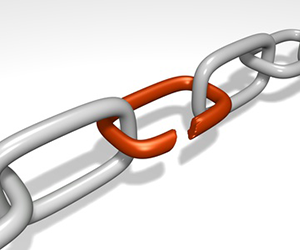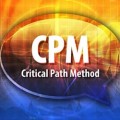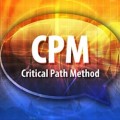
The Critical Chain Method is a relatively new concept in project management. It was developed and popularized by Dr. Elihayu M. Goldratt in his book Critical Chain (1997), which is written as a novel but outlines the methods used to ensure that projects complete on time.
Critical Chain vs. Critical Path
The Critical Chain method is similar to the Critical Path Method which is in widespread use today within the the project management profession. In fact, the “critical chain” is the same thing as the “critical path” except that the way it’s determined uses a completely different set of processes. Whereas the critical path method is very mechanical, assuming people are like robots and perform work in a perfectly mechanical way, the critical chain method focuses more on the human element.
Background
Dr. Goldratt focused his research on the following three human factors which affect the normal completion of project tasks:
- Student Syndrome: Starting the task at the latest possible moment.
- Parkinson’s Law: Pacing the completion of the task throughout the full duration assigned to it.
- Multitasking: Working on multiple tasks simultaneously and therefore not being fully committed to any one task.
The problem with traditional project management is the inclusion of a contingency within each task. This is supposed to increase the likelihood of the task being completed on time, however in practice the opposite actually occurs. The work expands to fill the time allocated to it.
What is the Critical Chain?
The definition of the Critical Chain is the same as the Critical Path in traditional project management. It is the longest path of tasks to project completion. But in its calculation and methodology, it is a completely different method. You must essentially use one method or the other, or both in parallel if you have the time.
How to Implement the Critical Chain Method
To use this method, a project manager performs the following sequence of events during the project planning phase, to develop the schedule.
- Develop the Task List, as with the critical path method.
- Estimate task durations at the 50% level (50% probability of meeting or exceeding)
- Estimate task durations at the 95% level (95% probability of meeting or exceeding)
- The difference between these two values is the buffer. Add all of the buffers together and add it to the end of the project as its own task. This is the project buffer.
- Inspect the non-critical path tasks. Insert buffers and ensure that the buffers do not impact the critical chain. If they do, add an additional buffer into the critical chain. These are called feeding buffers.
- Perform resource leveling (i.e. ensure the resources are available and remove spikes). Insert buffers in each task to account for the availability of resources. These are called resource buffers.
The completion date determined after each set of buffers is inserted, is used as the project completion date and communicated to stakeholders.
The project team is aware of the buffers but is driven by the task durations which are the 50% estimates.
Project Tracking
This is where the power of the method lies. The project manager tracks the project by determining how much of the project buffer has been consumed relative to the progress of the project. Project members are given completion dates which do not include the buffer, and if they are late, the project buffer is consumed and the project deadline is still protected. In an ideal world, the entire buffer would be consumed at the end of the project and the completion date would be met.
Even though they are aware of a buffer, the schedule presented to them forces them to act with a sense of urgency.
Further Reading
If you would like to know more about the Critical Chain Method, here are a few resources to investigate:
- Critical Chain Method, from Goldratt, the inventor of the method.
- Critical Chain, from amazon.com, the hard copy book from Eliyahu Goldratt.
- A good overview, including examples.






